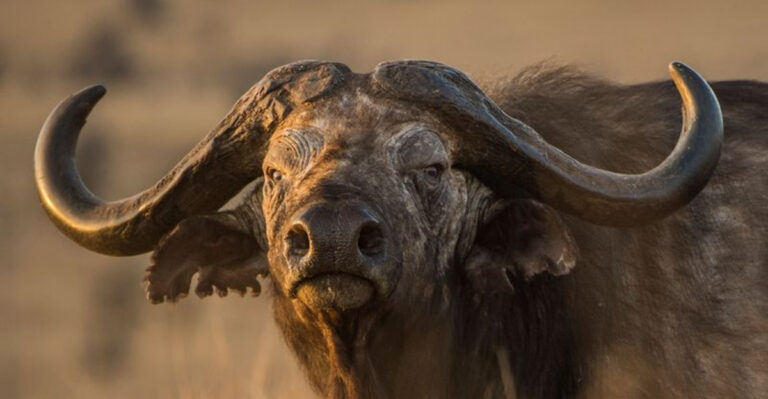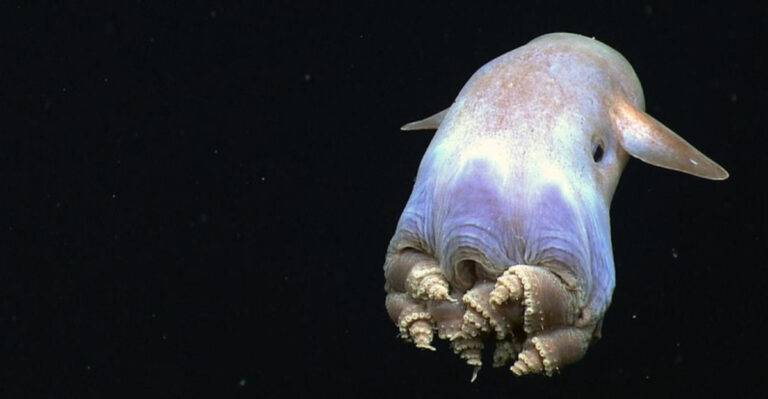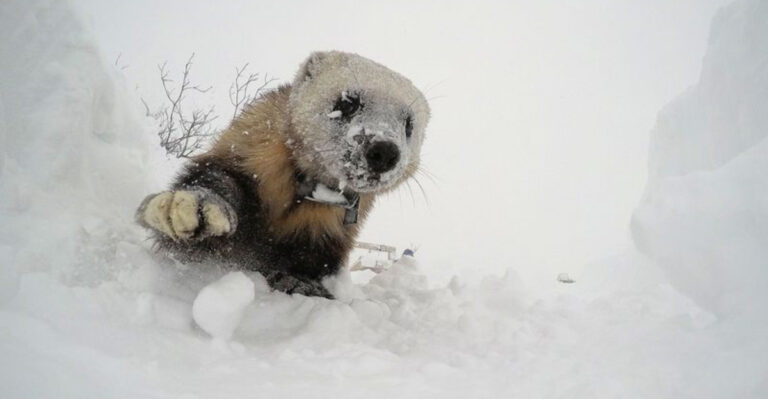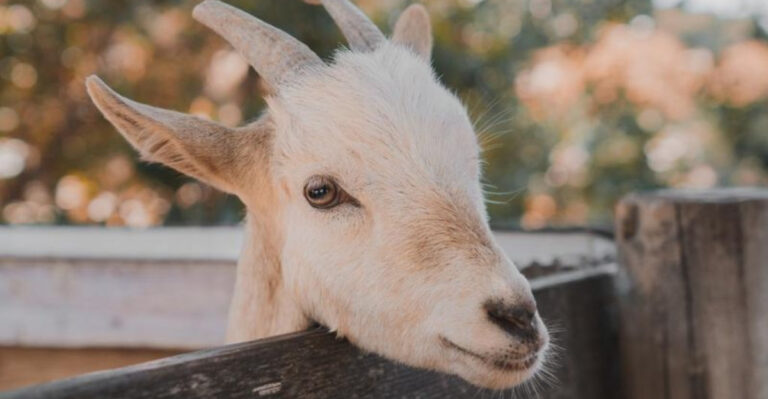12 American Dog Breeds With Fascinating Histories

America has given the world some incredible dog breeds, each with a story as unique as their personality. From working dogs bred for specific tasks to companions created for America’s elite, these canine citizens have shaped our nation’s history in surprising ways.
Ready to discover some tail-wagging tales that connect our furry friends to American history? These 12 breeds have stories that might just make you see your four-legged neighbor in a whole new light.
1. Boston Terrier: America’s Dapper Gentleman
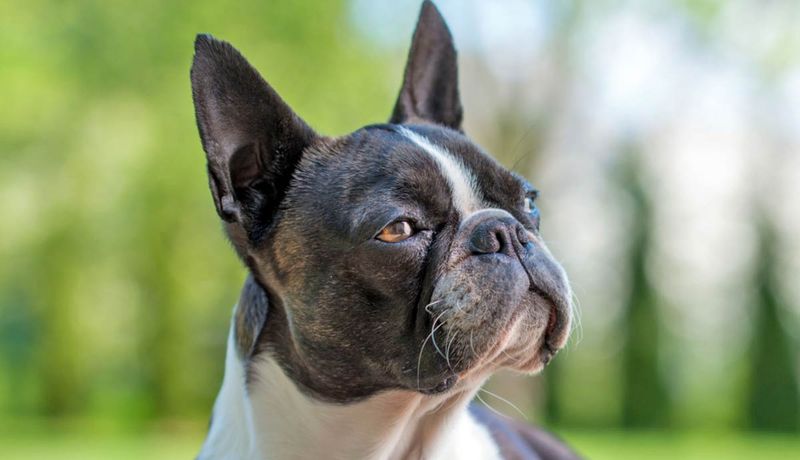
Originally bred from fighting dogs in the late 1800s, the Boston Terrier transformed from a fierce competitor to a charming companion within a single generation. Judge James Sullivan helped establish the breed in Boston, Massachusetts, where it quickly became a symbol of refinement.
The breed earned its nickname “American Gentleman” thanks to its tuxedo-like markings and courteous demeanor. Boston University adopted the terrier as its official mascot in 1922, cementing its place in American culture.
These small, sturdy dogs were the first breed developed entirely in America to be recognized by the American Kennel Club in 1893.
2. Alaskan Malamute: Arctic Survivors With Ancient Roots
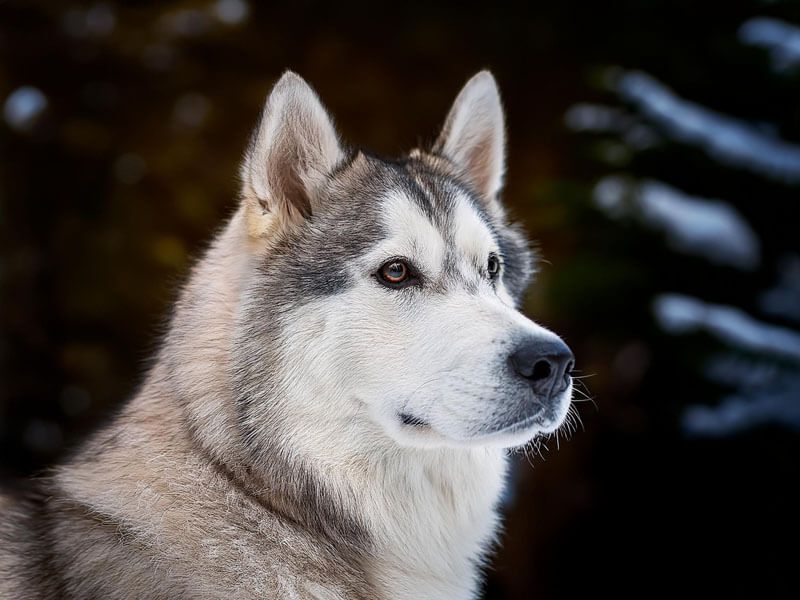
Thousands of years before Alaska became American territory, the Mahlemut Inuit tribe developed these powerful sled dogs to haul heavy loads across frozen terrain. Their thick double coats and massive frames evolved specifically for Arctic survival.
During the Gold Rush of 1896, Malamutes proved invaluable to prospectors navigating the harsh northern wilderness. Their strength could move massive freight loads where no other transportation existed.
Unlike their speed-focused Husky cousins, Malamutes were designed for power over velocity. The breed nearly disappeared during World War II when many were sent to Antarctica for expeditions, making today’s Malamutes descendants of just a few surviving bloodlines.
3. Chesapeake Bay Retriever: The Waterfowl Hunter’s Best Friend
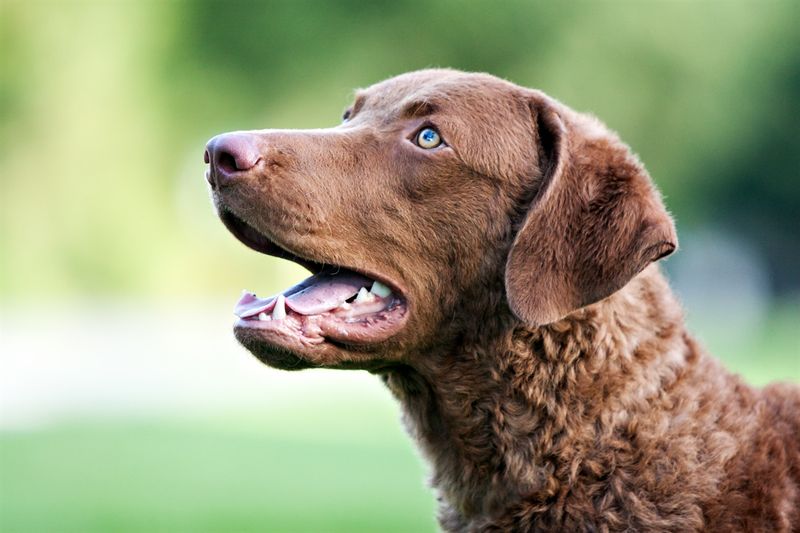
Born from a shipwreck off Maryland’s coast in 1807, this breed’s story begins with two Newfoundland puppies rescued from the frigid waters. These survivors, named Sailor and Canton, became the foundation for America’s ultimate waterfowl retriever.
Local hunters bred these dogs specifically for the punishing conditions of the Chesapeake Bay. Their oily, wavy coat repels water and provides insulation in icy conditions where other retrievers would quickly succumb to hypothermia.
Famously stubborn and intensely loyal, “Chessies” developed a distinctive trait – they bond deeply with one person and remember every bird they retrieve. The breed became Maryland’s official state dog in 1964, honoring its deep connection to the region’s hunting heritage.
4. Catahoula Leopard Dog: The Multi-Colored Hog Hunter
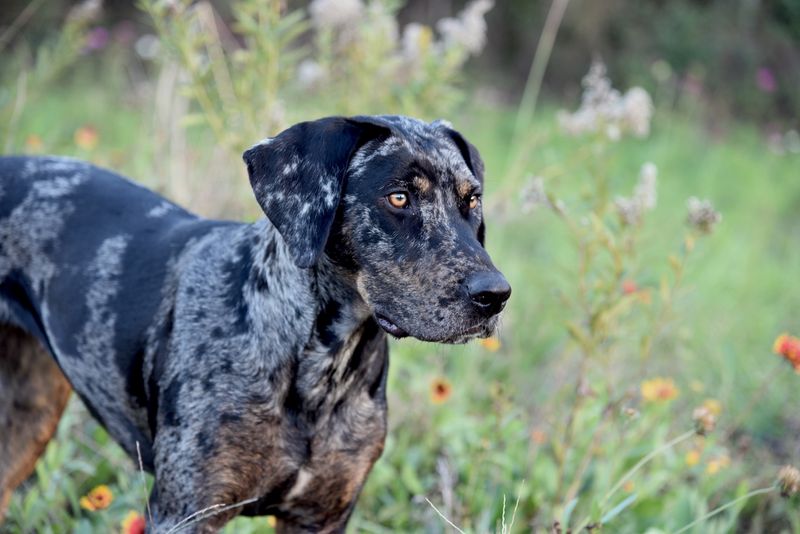
With striking marbled coats and piercing “cracked glass” eyes, Catahoulas emerged from the swamps of Louisiana through an unlikely mix of Native American dogs, Spanish Mastiffs, and French hounds. Named after Catahoula Parish, these versatile working dogs were developed by early settlers to hunt wild boar and herd unruly cattle.
Their unique “leopard” patterning comes in countless variations, with no two dogs marked exactly alike. Prized for their “personal space bubbles,” Catahoulas use their bodies to create boundaries when herding – a technique called “working the edge.”
Governor Edwin Edwards made them Louisiana’s official state dog in 1979. Their independence and territorial instinct reflect the rugged frontier spirit of early American settlers.
5. American Pit Bull Terrier: From Farm Helper To Wartime Hero
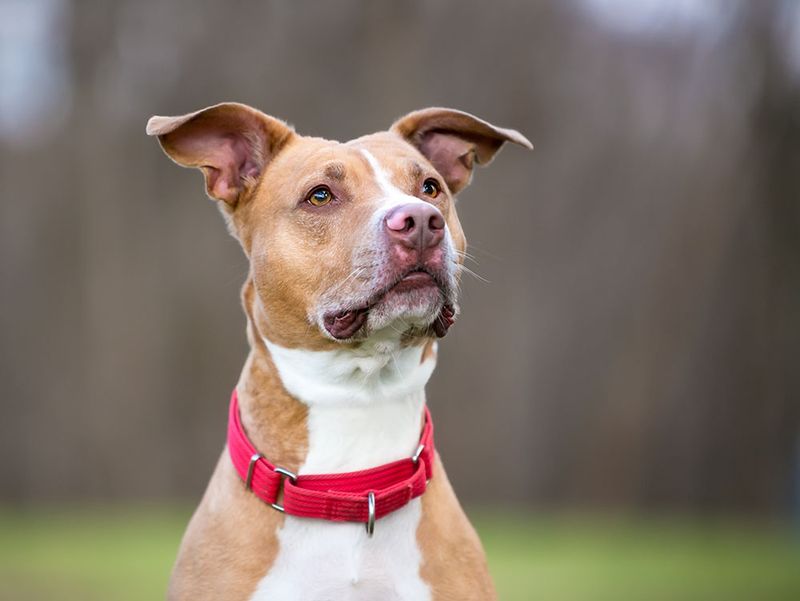
Before becoming the center of modern controversy, Pit Bulls were America’s beloved all-purpose farm dogs and family companions. Early immigrants brought bull-and-terrier crosses from Britain, where they’d been developed for the brutal sport of bull-baiting.
When these dogs arrived in America, farmers valued their strength, intelligence, and gentle nature with family. They guarded homesteads, hunted vermin, helped with livestock, and watched over children. Their loyalty earned them a place as America’s unofficial mascot during WWI, appearing on recruitment posters.
The most decorated war dog in history was a Pit Bull named Sergeant Stubby who served in 17 battles during World War I, detecting gas attacks and locating wounded soldiers while earning medals and rank.
6. Redbone Coonhound: America’s Scarlet Hunting Companion
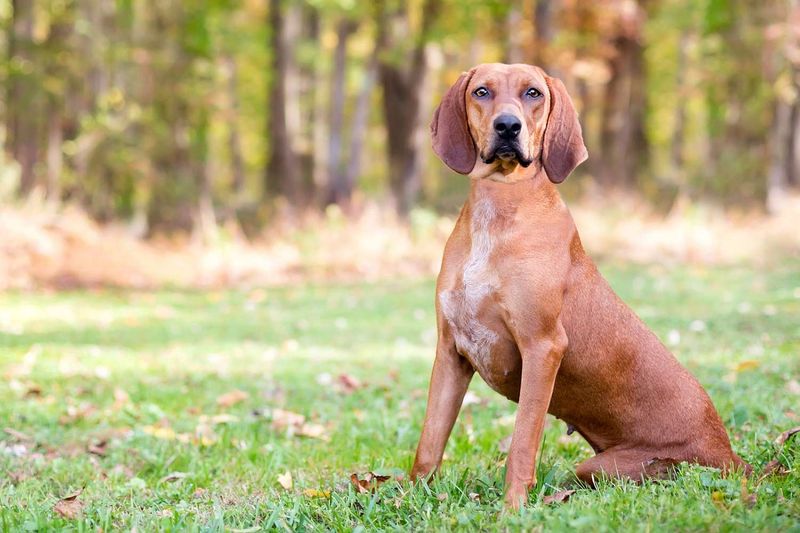
“Where the Red Fern Grows” introduced many to this stunning mahogany breed, but their history stretches back to pre-Revolutionary America. Scottish immigrants brought red foxhounds to the Appalachian and Ozark Mountains, where frontiersmen developed them into the ultimate raccoon hunters.
Their solid red coats – a deliberate breeding choice – helped hunters spot them easily in dense woods and against green foliage. George Washington himself kept similar red hounds for foxhunting at Mount Vernon.
Unlike other hunting breeds that specialize in retrieving or pointing, Redbones are “tree dogs” that chase prey until it climbs, then hold position while baying loudly to alert hunters to their location. Their distinctive howl carries for miles through mountain valleys.
7. Chinook: The Sled Dog Of New Hampshire

Named after a single foundation dog, the Chinook breed nearly vanished completely before dedicated enthusiasts saved it from extinction. Arthur Walden created these sled dogs in New Hampshire by crossing Mastiff-type farm dogs with Huskies, seeking the perfect blend of power, speed, and friendly temperament.
The original Chinook dog accompanied Admiral Byrd on his Antarctic expedition in 1927. Sadly, he never returned – but his legacy lived on through his offspring.
By 1981, only 11 breedable Chinooks remained in the world, earning them a place in the Guinness Book of World Records as the rarest dog breed. Today’s population traces back to those few survivors. New Hampshire named the Chinook its official state dog in 2009, celebrating this remarkable comeback story.
8. Plott Hound: The Mountain Bear Hunter
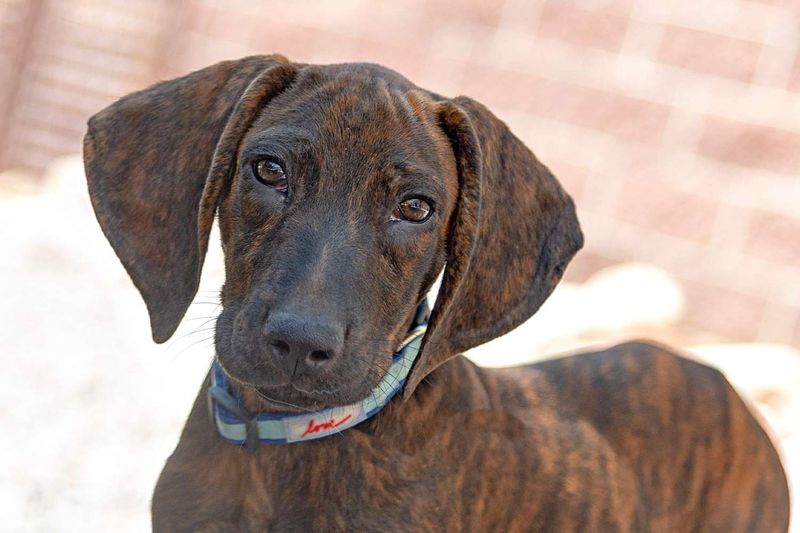
The story begins in 1750 when Johannes Plott fled Germany with five prized hunting dogs, eventually settling in the mountains of North Carolina. His family preserved this special bloodline for generations, creating a fearless breed specifically for tracking and treeing black bears in rugged Appalachian terrain.
Unlike most hounds bred primarily for speed, Plotts were developed for courage and tenacity when facing dangerous game. Their distinctive brindle coats provide natural camouflage in mountain forests.
These dogs remained virtually unknown outside the southern Appalachians until North Carolina declared them the official state dog in 1989. Today, wildlife conservation officers still use Plott Hounds to track injured bears and other large animals through mountainous wilderness where vehicles can’t travel.
9. American Foxhound: George Washington’s Hunting Pack

Our founding father wasn’t just the first president – he was America’s first foxhound breeder! Washington maintained detailed breeding records and imported hounds from England and France to develop faster, more athletic dogs suited for hunting in Virginia’s challenging terrain.
Lafayette gifted Washington with French hounds in 1785, introducing new bloodlines that helped create the distinctive American version of the foxhound. These dogs were taller, lighter, and faster than their English cousins – adaptations necessary for America’s vast hunting territories.
The American Foxhound became Virginia’s state dog in 1966, honoring its deep connection to American independence. Modern foxhunting clubs still maintain packs that trace their lineage directly to Washington’s original hounds at Mount Vernon.
10. Toy Fox Terrier: From Rat Catcher To Circus Star
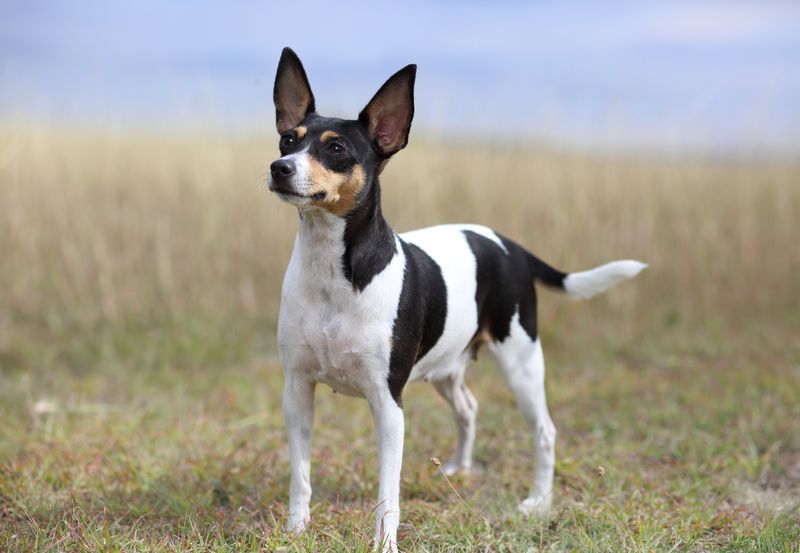
Farmhands in the early 1900s created this pint-sized powerhouse by crossing Smooth Fox Terriers with toy breeds like Chihuahuas and Manchester Terriers. Their original purpose? Eliminating rats from barn and granary while requiring less food than their larger cousins.
The breed’s intelligence and athletic ability soon caught the attention of traveling circuses. These tiny performers became stars of the big top, walking tightropes and performing complex tricks that amazed audiences across America.
Despite their diminutive size – typically under 7 pounds – they retained the fearless terrier spirit. A Toy Fox Terrier named Foley became famous during the Depression era for his ability to climb ladders and dive from platforms as high as 40 feet into a small water tank, earning him the nickname “The Diving Wonder Dog.”
11. American Water Spaniel: The Midwestern Duck Hunter

While most sporting breeds came from Europe or Britain, the American Water Spaniel was developed by hunters along the Mississippi River and Great Lakes during the mid-1800s. These versatile dogs worked from small boats to retrieve waterfowl in the challenging marshlands and icy waters of Wisconsin.
Doctor Fred Pfeifer saved the breed from extinction in the early 1900s when newer hunting breeds became fashionable. His dedicated breeding program preserved this uniquely American sporting dog when numbers dwindled dangerously low.
Their chocolate-brown curly coat serves a practical purpose – it insulates against frigid water while their compact size allows them to fit comfortably in small hunting skiffs. Wisconsin honored this native son by naming it the state dog in 1985.
12. Rat Terrier: The Farmer’s Multipurpose Exterminator
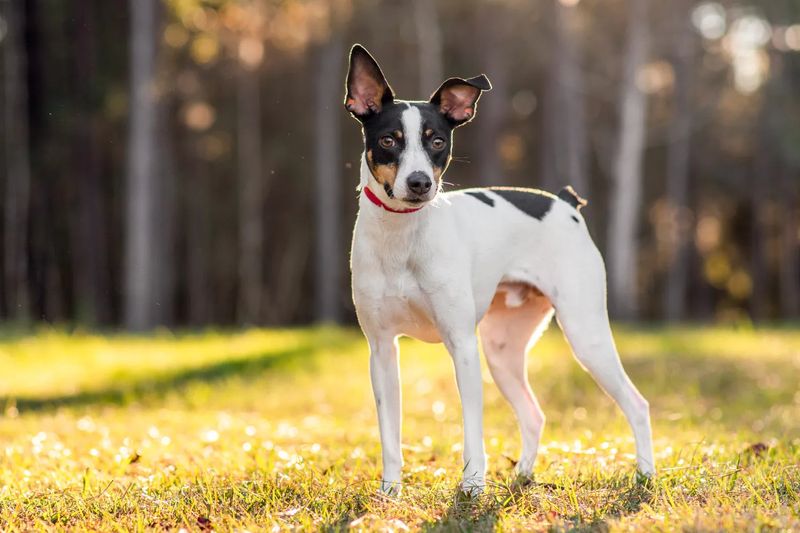
President Theodore Roosevelt gave this breed its name after his own terriers eliminated a serious rat infestation at the White House. These dogs were working-class heroes during the early 20th century, when a single Rat Terrier could dispatch hundreds of rodents in one day, protecting grain stores and preventing disease.
Farm families bred these dogs for practical versatility rather than appearance. They introduced Whippet blood for speed, Beagle genes for hunting ability, and various terrier lines for tenacity, creating the ultimate farm helper.
During the Depression era, these dogs were so common on American farms that they weren’t considered a formal breed – just “the dog that every farmer had.” Their population declined sharply with the introduction of chemical pesticides in the 1950s, but dedicated enthusiasts preserved these historic working dogs.

